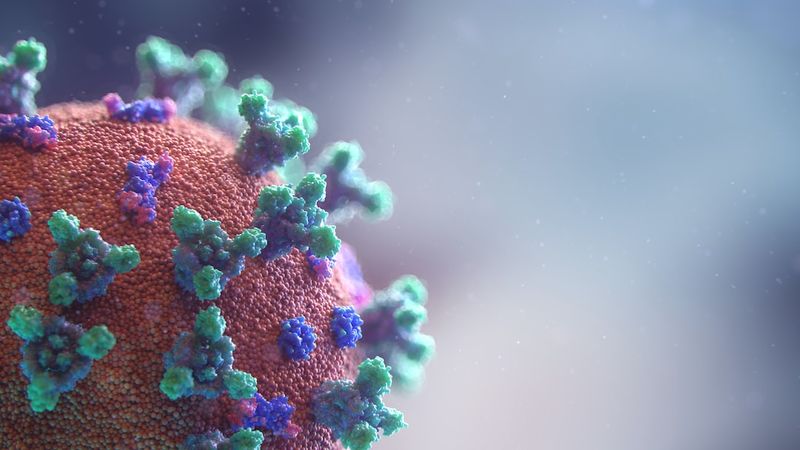All Woman: Could your symptoms be PMDD?
Symptoms and Differences from PMS
If you have been experiencing depression, suicidal or self-harm thoughts in identifiable episodes leading up to your period, you may be suffering from Premenstrual Dysphoric Disorder (PMDD). PMDD is a more serious form of Premenstrual Syndrome (PMS) that causes physical and emotional symptoms every menstrual cycle in the week or two before your period. While PMS may cause bloating, headaches, and breast tenderness, PMDD also includes extreme irritability, anxiety, or depression. These symptoms improve within a few days after your period starts but can be severe enough to interfere with your daily life.
Prevalence and Risk Factors
PMDD affects up to 10 percent of women of reproductive age. Some risk factors for PMDD include anxiety or depression, a family history of PMS, PMDD, or mood disorders, personal history of trauma, abuse, or other highly stressful events.
Complications and Diagnosis
Untreated PMDD can lead to depression and, in severe cases, suicide. It can cause severe emotional distress and negatively affect relationships and careers. To diagnose PMDD, your healthcare provider will take a medical history and evaluate your symptoms. You may need to track your symptoms through one or two menstrual cycles. Your provider will look for five or more PMDD symptoms, including one mood-related symptom, and rule out other conditions such as anxiety, depression, or reproductive disorders.
Treatment Options
Treatment for PMDD may involve a combination of approaches. Your healthcare provider may recommend antidepressants or hormonal birth control pills to help manage your symptoms. Dietary changes, such as cutting back on certain foods and caffeine, and taking vitamins like B-6 and magnesium may also reduce your symptoms. Over-the-counter pain medicines can help ease physical symptoms such as cramps, headaches, and breast tenderness. Regular exercise and stress management tools like deep breathing exercises and meditation may improve your mood.
Editorial: Recognizing and Addressing PMDD
Premenstrual Dysphoric Disorder is a condition that affects a significant number of women and should not be dismissed or ignored. The symptoms of PMDD can be debilitating to the point that they interfere with daily activities and relationships. It is crucial that women who experience these symptoms seek help and support.
Raising Awareness and Breaking the Stigma
One of the first steps in addressing PMDD is raising awareness and breaking the stigma surrounding mental health and reproductive disorders. Women should be encouraged to openly discuss their symptoms with their healthcare providers and seek proper diagnosis and treatment. By fostering an environment of understanding and support, we can ensure that women feel comfortable seeking help.
Improving Access to Healthcare
Access to healthcare is vital in ensuring that women with PMDD receive the support and treatment they need. Healthcare providers should be knowledgeable about PMDD and its symptoms, and they should offer thorough evaluations and appropriate treatment options. Additionally, efforts should be made to make healthcare services more accessible and affordable, particularly for those in vulnerable communities.
Advancing Research and Treatment Options
Further research into the causes and treatment of PMDD is necessary to improve the lives of women affected by this condition. By understanding the underlying biological and psychological factors contributing to PMDD, scientists and healthcare professionals can develop more targeted and effective treatments. Continued investment in research and support for organizations conducting PMDD studies is crucial.
Advice: Seeking Help for PMDD
If you suspect that you may have PMDD, it is important to reach out to your healthcare provider for evaluation and support. Keep a record of your symptoms and their timing to provide a comprehensive overview of your condition. Openly discuss your concerns and experiences with your provider, as they will be able to guide you towards appropriate treatment options and resources.
Remember that seeking help is not a sign of weakness but a proactive step towards improving your well-being. PMDD is a legitimate medical condition that requires attention and care. With the right diagnosis and treatment, you can find relief from your symptoms and regain control over your life.
Support Networks
In addition to seeking professional help, consider reaching out to support networks and online communities where you can connect with others who have experienced or are currently experiencing PMDD. Sharing experiences, advice, and coping strategies with others who understand what you are going through can be incredibly beneficial.
Taking Care of Yourself
While seeking treatment for PMDD, prioritize self-care. Engage in activities that bring you joy and help you relax. Practice stress-reducing techniques such as yoga, meditation, and deep breathing exercises. Pay attention to your diet and try to incorporate nutritious foods that support overall well-being.
Remember, you are not alone in your struggle with PMDD. With the right support and treatment, you can manage your symptoms and lead a fulfilling life.

<< photo by Fusion Medical Animation >>
The image is for illustrative purposes only and does not depict the actual situation.
You might want to read !
- Anger Mounts as Republican Representative Calls for Removal of Joint Chiefs Chair Milley
- Sophia Loren Falls, Fractures Hip, Requires Surgery: A Reflection on Aging and Resilience
- “Indigenous Artist Joins Forces with Orange Shirt Day Founder for Collaborative Initiative”
- Is it PMDD or just PMS? Understanding the differences and finding relief.
- PSG vs. Dortmund: A Clash of Titans on the Pitch at Sept …
- Jean-Charles Lajoie Steps Down from BPM Sports: The End of an Era
- Bone Thugs-n-Harmony Star Krayzie Bone Hospitalized: Exploring the Health Scare of a Rapper
- Prince William’s Tribute to FDNY: Uniting Strength and Resilience
- Potential Title: “NFL Exec Reveals Broncos’ Sean Payton’s Struggle with Tolerating People…”
- Battle at the Wanda: Atletico Madrid Triumphs over Rival Real Madrid with 3-1 Victory – LaLiga Clash
- French Rapper MHD Sentenced to 12 Years in Prison for Paris Murder




